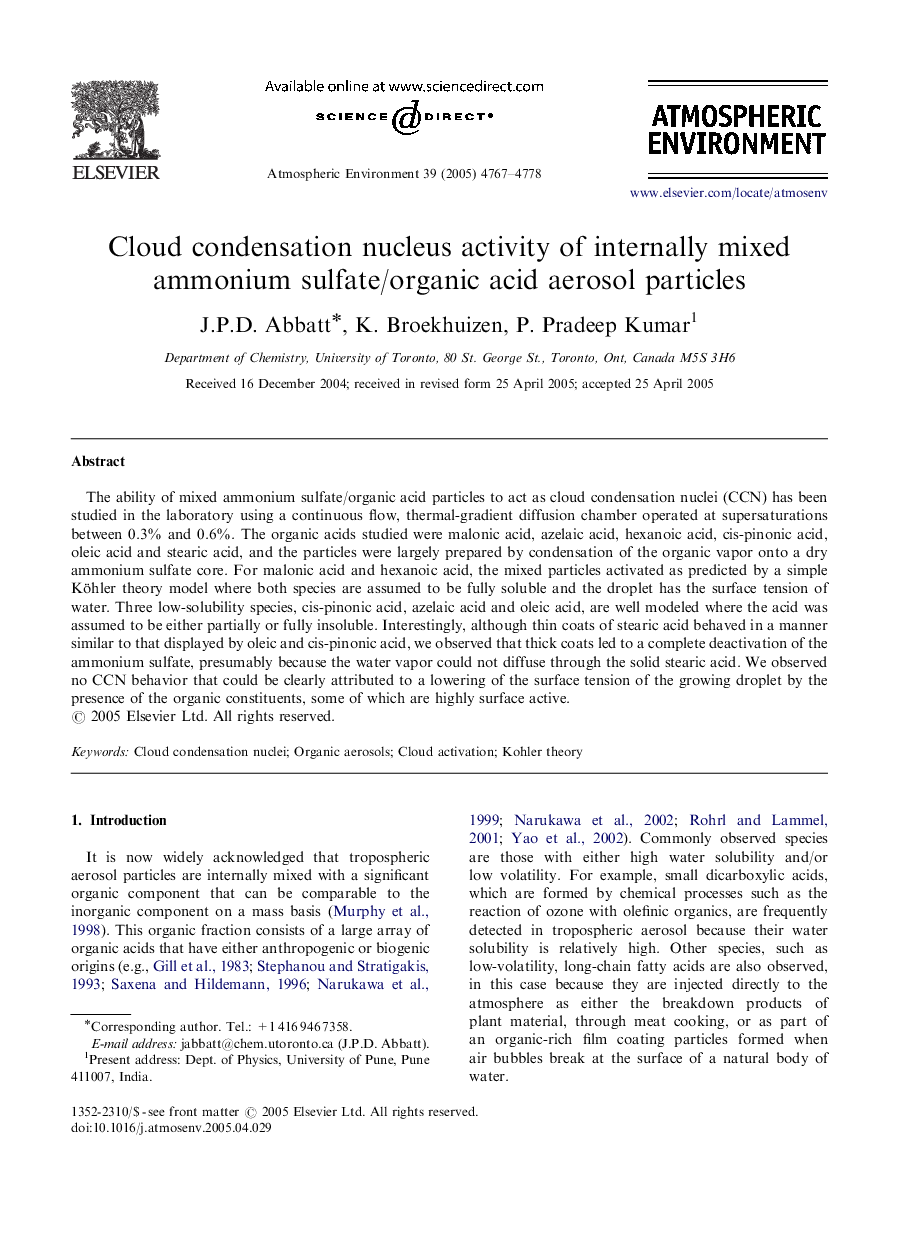| Article ID | Journal | Published Year | Pages | File Type |
|---|---|---|---|---|
| 4445431 | Atmospheric Environment | 2005 | 12 Pages |
The ability of mixed ammonium sulfate/organic acid particles to act as cloud condensation nuclei (CCN) has been studied in the laboratory using a continuous flow, thermal-gradient diffusion chamber operated at supersaturations between 0.3% and 0.6%. The organic acids studied were malonic acid, azelaic acid, hexanoic acid, cis-pinonic acid, oleic acid and stearic acid, and the particles were largely prepared by condensation of the organic vapor onto a dry ammonium sulfate core. For malonic acid and hexanoic acid, the mixed particles activated as predicted by a simple Köhler theory model where both species are assumed to be fully soluble and the droplet has the surface tension of water. Three low-solubility species, cis-pinonic acid, azelaic acid and oleic acid, are well modeled where the acid was assumed to be either partially or fully insoluble. Interestingly, although thin coats of stearic acid behaved in a manner similar to that displayed by oleic and cis-pinonic acid, we observed that thick coats led to a complete deactivation of the ammonium sulfate, presumably because the water vapor could not diffuse through the solid stearic acid. We observed no CCN behavior that could be clearly attributed to a lowering of the surface tension of the growing droplet by the presence of the organic constituents, some of which are highly surface active.
